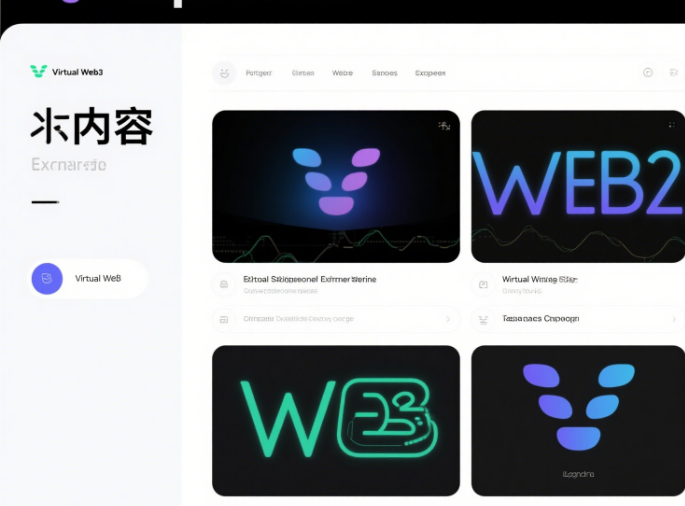The digital landscape is undergoing a seismic shift, and at its core lies the convergence of virtual reality (VR), blockchain technology, and decentralized systems. Virtual Web3 experiences are no longer just a niche concept—they are emerging as the next frontier for how we socialize, work, trade, and engage with digital content. As Bitora continues to chart the course of Web3 innovation, understanding this paradigm shift is essential for anyone looking to navigate the decentralized economy.
1. The Genesis of Virtual Web3 Experiences: A Blend of Tech and Imagination
Web3, the decentralized iteration of the internet, is built on pillars like blockchain, smart contracts, and NFTs. But what elevates it from mere infrastructure to immersive reality? Virtual Web3 experiences bridge the gap between abstract decentralized systems and tangible human interaction. By integrating VR/AR, spatial computing, and decentralized protocols, these experiences enable users to:
- Own digital assets as NFTs and showcase them in virtual galleries or metaverses
- Participate in decentralized finance (DeFi) through interactive financial ecosystems
- Attend virtual events, concerts, or conferences with true digital ownership of experiences
For instance, platforms like Decentraland and Sandbox have already proven that virtual real estate, art exhibitions, and even fashion shows can thrive in Web3, all underpinned by blockchain’s transparency and security.
2. The Technological Backbone of Immersive Web3 Realities
Three key technologies are driving the rise of virtual Web3 experiences:
a) Blockchain and Digital Ownership
Blockchain’s immutable ledger allows users to prove ownership of virtual assets—from virtual lands to wearable avatars—with true scarcity and transferability. This creates economic incentives within virtual ecosystems, where users can earn, trade, and monetize their digital lives.
b) Extended Reality (XR)
VR and AR technologies are no longer confined to gaming. In Web3, they enable phygital (physical + digital) experiences, such as trying on virtual clothing in a metaverse boutique before purchasing the physical item. Brands like Nike and Gucci have already dipped into this space, recognizing the potential to engage audiences beyond traditional retail.
c) Decentralized Autonomous Organizations (DAOs)
DAOs are reshaping governance in virtual spaces. Users can collectively vote on how metaverses evolve, what events to host, or even how to allocate virtual land revenue. This democratic approach ensures that virtual Web3 experiences are community-driven, not corporate-controlled.

3. Real-World Implications: From Socializing to Commerce
The impact of virtual Web3 experiences extends far beyond entertainment:
a) The Future of Work
Remote collaboration is being reimagined in virtual offices within metaverses. Companies like Meta are experimenting with VR meetings, where avatars replicate human body language, fostering a sense of presence lacking in traditional video calls. Web3 adds layers of ownership—imagine owning the digital tools or intellectual property created in these virtual workspaces.
b) Financial Inclusion Through DeFi Experiences
DeFi platforms are adopting virtual interfaces to make decentralized finance more accessible. Instead of navigating complex dashboards, users can walk through a virtual bank in a metaverse, interacting with smart contracts as intuitive 3D interfaces. This could onboard millions who find traditional crypto interfaces intimidating.
c) Cultural and Social Revolution
Virtual Web3 spaces are becoming hubs for cultural expression. Artists are minting NFTs and showcasing them in virtual museums, while musicians host live concerts in the metaverse, earning revenue directly from fans via crypto tips. These experiences democratize creativity, allowing creators to bypass traditional gatekeepers.
4. Challenges and the Path Ahead
While the potential is vast, virtual Web3 experiences face hurdles:
- Interoperability: Most metaverses are siloed; users can’t easily move assets between platforms. Projects like Polkadot and Cosmos are working to solve this through cross-chain protocols.
- Accessibility: High-end VR headsets and crypto wallets remain barriers for mainstream adoption. Lower-cost hardware and user-friendly onboarding tools are critical.
- Regulatory Uncertainty: Governments are still grappling with how to regulate virtual economies. Clear frameworks will be essential to build trust and scalability.
Yet, these challenges are not insurmountable. As Web3 infrastructure matures, virtual experiences will become more seamless, inclusive, and secure—thanks to the collaborative nature of decentralized development.
5. Bitora: Your Guide to the Virtual Web3 Frontier
As the Web3 landscape evolves, staying informed is key. Bitora is committed to delivering cutting-edge insights into virtual Web3 experiences, from tracking metaverse trends to analyzing the impact of blockchain on digital culture. Whether you’re an investor, creator, or curious explorer, our platform connects you to the ideas and innovations shaping the future of digital interaction.
The era of passive internet use is over. With virtual Web3 experiences, you’re not just a user—you’re a participant, an owner, and a creator. Join Bitora in unraveling the possibilities of a decentralized, immersive internet.









Leave A Reply